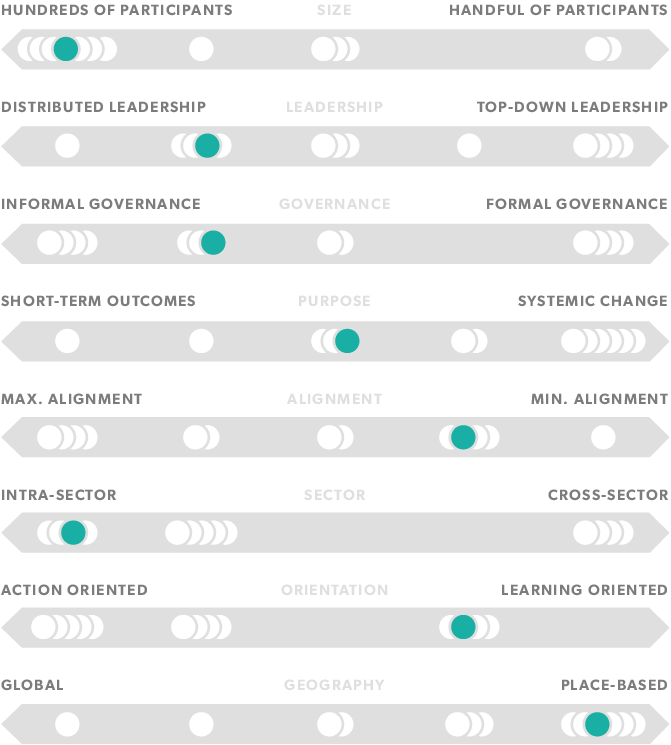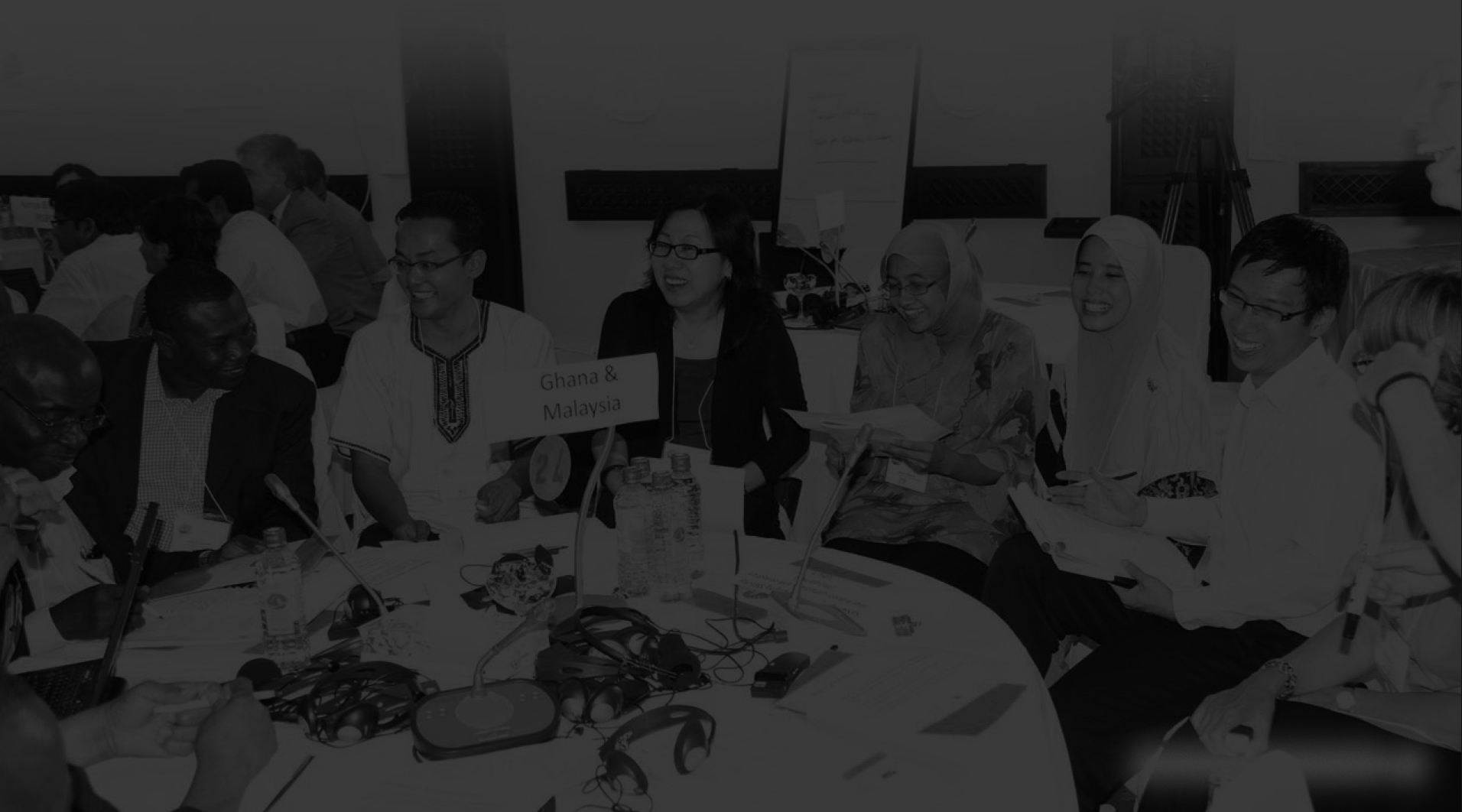SEEING THAT THE TIME WAS RIGHT
At the 2009 meeting, presenters from Ghana, India, Thailand, and Vietnam shared a set of implementation challenges which were quite similar. When asked if they had ever worked together, they said no, not beyond ad-hoc interaction at existing international gatherings. Stefan Nachuk, formerly an Associate Director at Rockefeller Foundation, was at the meeting and spoke with the participants afterwards about their plans. He learned that there were no resources in place to connect these system-builders with either advice from their peers or technical assistance from experts, and recognized that the timing for a new network was just right. “While there were other networks addressing UHC, the kind of work this group had in mind was a completely blank space,” he reflected. “When you find a problem and a group of people who want to work together, independent of your own organization, that is a special opportunity.”
Carolyn Bancroft, another former Rockefeller program officer who worked with Nachuk, noted how helpful it was to see health system leaders from different countries with common concerns even at this early stage: “They had shared objectives around certain key technical areas. We saw the possibility for contributing in a way that could not only give direct benefit to these countries but also help many other low or middle income countries with the same questions.”
LAUNCHING A NETWORK
To address this need, in 2010 The Rockefeller Foundation launched the Joint Learning Network for Universal Health Coverage, incorporating health system leaders from seven countries: Ghana, India, Thailand, Vietnam, Indonesia, the Philippines, and Malaysia.
The network was launched with the engagement of Nachuk, Bancroft, and other colleagues from the Foundation, as well as their technical partners Research for Development, PATH, ACCESS Health, and the Institute for Healthcare Improvement. With that backbone support, what started as casual conversation quickly blossomed into a vibrant community of practice that facilitates information exchange and peer learning through webinars, email dialogue, and multi-day in-person workshops to do intensive work and build personal . As the participants spent more time together, comparing notes on the options available for accelerating progress towards universal health coverage, what quickly became clear was that the greatest common ground existed between the senior leaders of health systems. It was these people who worked directly with technical issues which are often significant stumbling blocks to rolling out a new UHC system like information technology, quality, expanding coverage, improving primary care, and provider payment reform. The design and implementation challenges in these areas were similar across many countries, making it a productive dialogue among the participants to air questions and ask for help. At the network’s first meeting in 2011, topics cropped up quickly for discussion, two tracks formed immediately around expanding coverage and provider payment, and in 2012 a third track formed on the topic of quality.
CRAFTING A LIGHTWEIGHT ROLE
Nachuk and his two colleagues at The Rockefeller Foundation were excited to see the new network take form, and they created a relatively light-touch role for themselves as the funder and strategic design partner. Not only were they constrained in the amount of time they could dedicate to the work, they also saw how crucial it was to channel the participants’ creativity and let them design an experience that directly served their needs. This was especially important because of how rare it is for international communities of practice to be led by the participants rather than the donors. Nachuk wanted to help foster learning within the group using the principles of knowledge co-production, and decided to do that in two ways. First, he provided ample funding for coordination, stepping out of the role of and asking the technical partners to facilitate the group’s convenings. And, he set aside money to support any additional forms of small-group among the participants beyond the network’s full-group convenings.
This approach reflected Nachuk’s view that working in networks is inherently fluid. “So little is known at the start [of a network] that doing a work plan is a little backwards,” he said. “You have to get into it and discover what the work is before you can make a plan.” The flexible funding for collaboration has been useful on multiple occasions, such as one instance when administrators from Ghana and Kenya were both working on the issue of electronic claims and wanted to spend in-person time comparing notes in order to inform their respective work on building a nationwide claims-processing system.
SHIFTING FROM PEER LEARNING TO COLLABORATION
Now, participants are exploring more hands-on forms of collaboration that go beyond peer learning. The network has now launched a five-country collaborative that is developing ways to monitor and assess the impacts of provider payment reforms. In 2014, participants co-authored a manual for undertaking facility costing studies in low- and middle-income settings, where data availability is usually far from perfect.
The network is now expanding and gaining recognition. In early 2015, 13 new countries joined as members, bringing the total to 22. Also in 2015, the World Bank’s Global Health Practice leadership identified the JLN as its core platform for cross-learning, identifying country demands, and disseminating analytical products, and has taken a stronger role in helping coordinate the network and raise additional funds to manage it.
Most importantly, the participants have found being a part of this network directly beneficial to their work. When Rockefeller asked an independent evaluator to survey the network’s 230 participants, the result was that fully 93% reported that their knowledge and skills have improved as a result of the network, and 80% had already put that knowledge to use, particularly in their own strategic planning and in convincing others within their countries to pursue specific reforms.
BY COMPARISON: THE NETWORK’S DESIGN
In the section What network design would be most useful? we introduce a simple framework for comparing the ‘design’ of a network — eight basic variables that define its shape and size. See below for our estimation of the design of the Joint Learning Network (in teal) versus that of the other networks we profile (in white):

Sources: Monitor Institute interviews with Stefan Nachuk and Carolyn Bancroft while they were on staff at The Rockefeller Foundation (fall 2014), Evolution of the Joint Learning Network (June 30th 2013), Joint Learning Update (June 2013), How to Better Share Knowledge Between Countries Moving Toward UHC (May 5th 2014), and the Joint Learning Network website.

